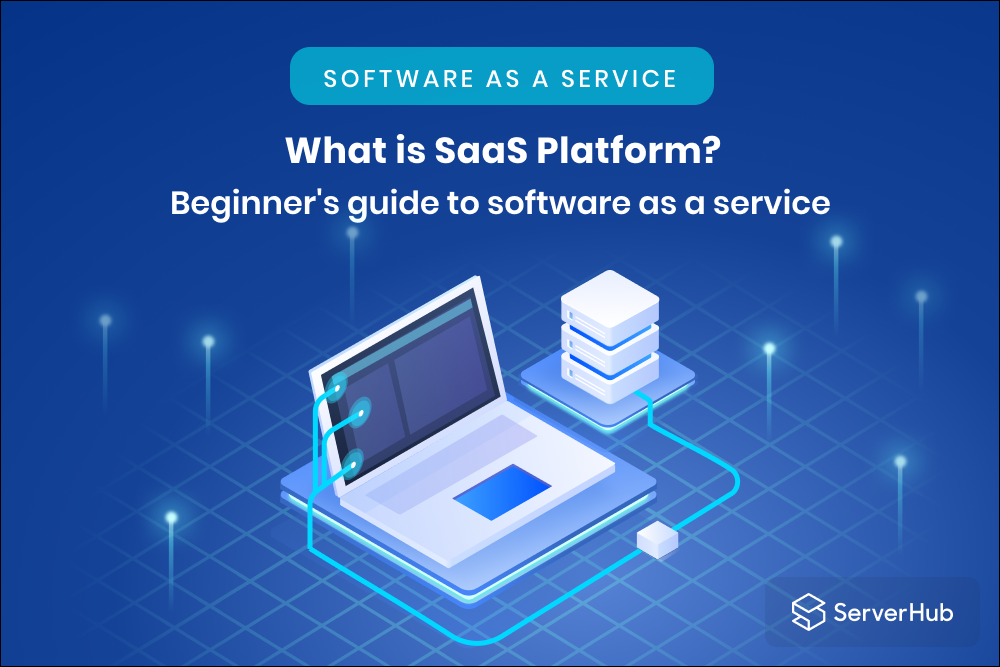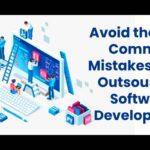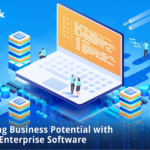The world today is powered by software. Every aspect of business—from IT to e-commerce to retail marketing—can now operate via the cloud. And cloud technology is revolutionizing the way companies around the world are able to do business.
It’s more than likely you already interact with SaaS (or Software as a Service) on a daily basis. And whether you’re familiar with the term or you’ve never even heard it before, it’s already established itself as the main distribution method for companies that host software on the internet. After all, recent surveys found that 86% of organizations expect SaaS to fulfill most of their software needs by 2022. But what is SaaS? And how does this type of software service impact your regular life? This guide will answer those questions and give you a better understanding of what software as a service really is.
Defining SaaS
Alright, so what is Software as a Service?
SaaS is the software licensing distribution model by which providers host automatically-updating applications on the internet so that users don’t have to download and update the application software themselves. Technically, SaaS falls under the cloud application umbrella, meaning it processes and stores data online. In essence, companies that utilize SaaS are able to give their users access to application software that they’d otherwise have to download and update on their own, streamlining the user’s experience by saving them immeasurable time and hassle.
All SaaS can be categorized into one of two groups: vertical and horizontal. Vertical SaaS work within the bounds of a single industry. They focus on clients with more specialized needs, such as Clio, which is a SaaS that only addresses law firms. Meanwhile, horizontal SaaS work across multiple industries, addressing multiple needs at once. A good example of a horizontal SaaS is Quickbooks, which works for any type of bookkeeping you might need done, from time tracking to accounting. Though both groups of SaaS employ the same distribution method, the main difference between vertical and horizontal SaaS software lies in who their customers are and how the SaaS serves them.
Business of the Future
In decades past, businesses simply didn’t have access to the IT infrastructure required to scale. And if they did, the price tag on software installation, maintenance, and consistent upgrades was enormous. But cloud computing has changed everything.
Cloud services allow for reliable, stable, and uninterrupted infrastructure that is available online and accessible 24/7. Primarily, this comes in the form of Software as a Service, or SaaS. A product of cloud computing and the business industry, SaaS is a software licensing and delivery model that allows users to access a vendor’s entire cache of application software through the cloud, accessible via web or API. Typically, SaaS applications charge customers a usage-based subscription fee, enabling individuals and organizations alike to rent relevant software for however long they need.
This method of software delivery is quickly gaining popularity among enterprise software vendors, incentivizing each to keep their prices competitive (or inexpensive, at least). And as far as user experience goes, downloading a SaaS application can feel sort of like renting a car; rather than pay for the entire car at once, you pay for the miles driven, or the days used. Further, just as a car rental service maintains their rental cars, the cloud-based model of SaaS means you never have to worry about software maintenance or upkeep, since all of that is taken care of by a third-party vendor.
SaaS Popularity
At the start, SaaS was considered too luxurious of a solution for start-ups and small businesses. But in recent years, as cloud technology has permeated most aspects of life, making the internet more accessible than ever, more and more businesses have been able to make the switch from traditional, on-premise software to a SaaS model. This proliferation of tech has enabled enterprise IT to deliver remote business applications to users via the internet using data, software, and other centralized resources.
Some of the most popular examples of SaaS products include web-based software, like Google Docs, Dropbox, and Microsoft Office 365. All of these platforms are available for unlimited use on any device with an internet connection. It is predicted that in 2022, 80% of enterprises will have transferred to a cloud-based infrastructure. SaaS is on the rise, and will only become more and more common as time advances.
Popular Examples of SaaS That You’ll Probably Recognize
Remember, even if you’ve never before heard the term SaaS, you’ve almost certainly used a SaaS software company in the recent past. Below are some examples of well-known SaaS platforms to give you a clearer idea of how Software as a Service functions.
- Google Drive: an automatically-updated platform that allows users to create documents, spreadsheets, and presentations
- Salesforce: a platform that focuses on managing customer relations
- Slack: a platform that allows co-workers to communicate via direct messaging
- DocuSign: a platform that enables users to virtually sign and exchange documents
- Dropbox: a platform that acts as a file-hosting service, allowing users to easily share files and back up work
The Advantages and Disadvantages of SaaS
Now that you’re familiar with Software as a Service, and you’ve seen some examples of it in the real world, it’s time to analyze the pros and cons of SaaS platforms before you decide to make the switch.
Advantages:
- Eliminates the need for all hardware maintenance and associated costs
- Potential to save money on IT costs—studies show companies saved an average of 15% in IT spending
- Data is more easily accessible through a centralized platform
- Changes and updates are done automatically
- Updates are done faster since hardware isn’t involved
Disadvantages:
- The option to stick with older software versions is taken away from the customer, thus forcing users to keep up with changes, which may be challenging for some users
- Software-integration problems can occur when switching to a SaaS model
- Companies (rather than the cloud vendors) are held directly reliable in case of a data breach, and may face legal repercussions
- Many SaaS companies charge monthly fees as opposed to a one-time charge for downloading a software, which some people prefer
- Slow internet speeds can mean slow software performance
You can check here for The 7 Advantages Of Software as a Service (SaaS)
SaaS Functions
The applications for SaaS are vast, spanning just about every industry imaginable. From project management to business planning, the SaaS model provides organizations with the proper tools for content management, enterprise resourcing planning (ERP), customer relationship management (CRM), security, identity and access management (IAM), and myriad other functions.
Due to their cloud-based delivery model, SaaS applications provide customers with three different deployment options:
- The public cloud is a space where software is developed on an infrastructure that is available for public usage. Typically, a commercial, academic, or government entity (or sometimes a combo of all three) will own and operate the cloud.
- A private cloud, on the other hand, is based on infrastructure that is licensed to a single company that serves customers globally.
- And a hybrid cloud is generally based on one of the aforementioned infrastructures, but can migrate to the other using standardized or proprietary technologies when demand necessitates.
SaaS Pricing Models
At this point, the SaaS market is teeming with a diverse range of products and services. Acquiring unique enterprise software has never been easier or more cost-effective. And just as the SaaS market is diversified and far-reaching, so is their range of pricing models.
Below are some examples of pricing models common across various SaaS platforms. Although they each differ slightly, they all have one thing in common—they’re all less expensive than purchasing an old-school software license.
- Per-user pricing charges customers based on the number of employees using the application.
- Tiered pricing offers a variety of packages with different features for different prices.
- Per storage pricing is a simple model whereby customers pay based on the amount of storage they use.
- Pay as you go charges users based on frequency of usage.
- Subscription pricing, or a recurring, standardized payment.
- Ad supported pricing generates revenue from advertisements rather than charging customers usage fees.
- Freemium pricing offers a free-to-use product complimented by premium add-ons.
You can please check here for 6 Steps to Build a Software as a Service (SaaS)
HuvTek have experience on working with many SaaS providers and support them to develop and implement new software solutions in order to they can focus on doing business. We can help you build the software that you need if you have plan or just idea to build a SaaS, don’t hesitate to drop a line at
- Contact us
- Phone: +84 888 780 670
- Email: [email protected]





The 7 Advantages Of Software as a Service (SaaS) – HuviTek
April 27, 2022[…] product of cloud computing and the business industry, Software as a System (otherwise known as SaaS) is a groundbreaking alternative to standard software installation in the […]
6 Steps to Build a Software as a Service (SaaS) – HuviTek
April 27, 2022[…] the Software as a Service (SaaS) industry has experienced exponential growth. At a projected annual growth rate of 18%, it is […]